- Home
- Tom Clancy
Special Forces: A Guided Tour of U.S. Army Special Forces Page 4
Special Forces: A Guided Tour of U.S. Army Special Forces Read online
Page 4
After some early successes (such as influencing elections in Italy, Greece, and France), the CIA was given much of the responsibility for conducting special military operations in the Korean War (which broke out in 1950). And there they ran into problems. Virtually every CIA behind-the-lines operation in Korea failed. The reasons for failure were many, but the key was the CIA’s lack of focus on regional and cultural issues in East Asia. (They hadn’t done their homework.) And these failures led to the ending of CIA involvement in special military operations.
For the military forces that had depended upon the CIA, there was more than just disappointment. There was out-and-out resentment against what they saw as the OSS old boys’ club.
Out of that experience came early attempts to build SOFs that would be attached to the various military services, and beholden to those forces alone. The first of these was the Army’s 10th Special Forces Group, which was created in 1952. The 10th SFG was to provide a “stay behind” SOF capability against the perceived threat of a European invasion by the Soviet Union and their Warsaw Pact allies. Other SOF units created during this period included the Navy’s Sea-Air-Land (SEAL) teams and the Air Forces “Air Commando” units. At first, these were just small units with minuscule budgets, and did little to attract the notice (or envy) of the leadership of their parent services.
President John F. Kennedy and Vietnam changed all that.
In the late 1950s and 1960s, as the old colonial empires of Europe were crumbling, “wars of liberation” seemed to erupt throughout the Third World. In Cuba, Vietnam, the Belgian Congo, and in a bewildering assortment of little-known and once sleepy places in Latin America, Africa, and East Asia, guerrilla forces—usually backed by communist patrons like China and the Soviet Union—were rolling back a century of colonial stability ... and colonial profits. Kennedy perceived a worldwide threat from these wars, and sought ways to fight the growing insurgent tide. Unfortunately, he was prone to taking shortcuts. He wanted to win ... but he wanted to win easy. Early in his presidency, he tried to use the CIA to stop Fidel Castro’s Cuban revolution. The result was disastrous—the Bay of Pigs fiasco and Operation Mongoose (an attempt to assassinate Castro that was run by the CIA out of Miami and supervised personally by Robert Kennedy).
Stung by these failures, Kennedy turned away from the intelligence community as a counterinsurgency force. Now it was the small military SOF community that caught the dramatic and excitable young president’s eye. Taking a special shine to the men of the Army Special Forces, whose distinctive green berets he admired, he ordered a vast expansion of SOF units in all services. And when he began to take seriously the communist threat in Southeast Asia, he began to deploy his new favorites to fight the North Vietnamese forces of Ho Chi Minh and the Vietcong rebels.
The tale of America’s 1960s and 1970s nightmare in Southeast Asia needs no retelling. But a few points should be made.
What few realize is that our war in Vietnam was actually a series of parallel campaigns, including the “big” ground war in the south, air campaigns all over Southeast Asia, and a number of covert actions. In the process, the pool of SOF units was vastly expanded ... so much so that they began to lose much of what was “special” about them in the first place. Men became Green Berets or SEALs who never should have been Green Berets or SEALs (much to the contempt of professional warriors). Even today, senior military leaders remember with loathing snake- and lightbulb-eating Special Forces hooligans making a mockery of discipline and order. (Based on his own bad experiences with SFs in Vietnam, H. Norman Schwarzkopf did everything in his considerable power to keep SOFs out of Desert Shield and Desert Storm.)
After the war, and especially during the Carter presidency, SOF-related funds were scarce (as was funding for the rest of the military). With all the services scraping for dollars to upgrade equipment, hold onto personnel, and keep units intact and in operation, SOF units were hard-pressed to keep any sort of capability alive. And like the rest of the U.S. military, SOF units sank into a dark morass, with little trust or support from the country or its leadership.
The one bright spot during the 1970s came when a few Army officers realized that the U.S. would have to deal with the growing threat of international terrorism.
As a small start, an antiterrorist unit was created in Europe-code-named Blue Light. Blue Light was a small company-sized force modeled on existing antiterrorist units in Europe and the Middle East, but since the Blue Light force was equipped and trained for only a few possible contingencies, its usefulness was limited.
A more permanent solution came with the development of Detachment Delta, better known today as the Delta Force, which was based upon the organization, training, and tactics of the British Special Air Service.6
Unfortunately for Delta, their first major mission (which was also America’s first major attempt to use SOF units in the post-Vietnam era) developed into a chaotic debacle. In 1980, Delta, along with Blue Light, was assigned the job of rescuing American hostages in Iran. During the operation, the helicopters that were to transport the rescue teams into Tehran broke down and the entire Joint Task Force had to be withdrawn. Failure turned into a flaming fiasco when several aircraft collided on the ground in Iran while refueling.
The immediate cause of this disaster was lack of foresight and planning by the U.S. civilian leadership.7 But deeper down, America’s SOF units had much more systemic problems. Like the rest of the U.S. military of that time, SOF units of each service were focused only upon the roles and missions of their parent force ... meaning that they lacked the ability either to operate together or to integrate units from nonSOF forces (such as transport helicopters and aircraft) into their own task forces. These skills—the core of “joint” (interservice and/or multinational) military operations—had not been practiced since the end of World War II. These limitations left the U.S. entering the 1980s ill-equipped for the terrorist and insurgency battles they would have to fight in the years ahead.
One might have imagined that the arrival of the Reagan presidency in 1981 would have provided SOF forces with the financial and other benefits soon enjoyed by the rest of the American military. However, since most senior leaders during the Reagan era were the same people who had most hated SOF units during their days as junior officers in Vietnam, that was anything but the case. Thus, for example, the Air Force leadership refused to buy new aircraft and helicopters for their own SOF units, even when directly mandated by congressional legislation. The Army and Navy were likewise doing all they could to starve their own SOF units (over the objections of Congress and the few visionary civilian leaders within the Department of Defense).8
Another problem during the Reagan Administration was its love affair with clandestine and covert action (even as it allowed the deterioration of those special forces units already in place). Thus a number of so-called “black” SOF units were created.9 These included Sea Spray (a clandestine helicopter unit) and Yellow Fruit (a behind-the-lines reconnaissance unit). Though some of these units (Yellow Fruit, for example) transitioned to join the larger SOF community, where they serve today, others went “rogue” (always a temptation among black units), and their commanders had to be indicted and tried for misappropriation of funds and other charges. In consequence, several of the Reagan-created black units were dissolved ... and conveniently forgotten by those who had created them.
Congress would not forget.
During the early 1980s a series of terrorist incidents against American citizens and property overseas caught the attention of Congress, and special operations became a congressional passion. What particularly bothered Congress was the impotence of U.S. SOF units. In those days, joint (i.e., multiservice) was an oxymoron. The community had no centralized leadership, and thus no one had any idea of the extent of our SF capabilities. What clearly was needed was a joint command and operations structure for the entire U.S. SOF community. Yet this was exactly what the various service chiefs wanted to avoid.
&n
bsp; Though the buildup and renewal of the military during the early Reagan years was on the whole a good thing, it came with a downside: an increase in interservice rivalries and squabbles. All the services did their best to upstage the others in operations and funding. Clearly, the various services were not going to become “joint” on their own.
Meanwhile, the inability of U.S. forces to conduct joint operations had become intolerable to Congress. The worst offense against “jointness” remained the failed Iran hostage rescue mission in 1980, but the 1983 invasion of Grenada (Operation Urgent Fury) also pointed up serious weaknesses. The actual structure of the U.S. military had not been changed since the 1947 National Security Act, almost four decades earlier. By the mid-1980s, it was clear to almost everyone in the Congress that reform was needed.
We needed a “joint” military.
But what is “jointness”?
Military operations conducted jointly yield three major benefits: economy, efficiency, and effectiveness.
Economy: A military force must operate under tight budget restrictions. If military services were to fight together under joint leadership, unnecessary duplications of capabilities could be ended. Thus, for example, in the mid-1990s two separate fleets of U.S. tactical jamming aircraft were eliminated (the Air Force’s EF-111A Raven and the Navy/Marine EA-6B Prowler). Now the U.S. air services jointly operate a single force composed only of EA-6Bs.
Efficiency is a direct result of the elimination of redundant units and organizations within the services. Years ago, each service developed its own weapons, munitions, and systems, and there was little crossover of ideas or designs. Today, very few procurement programs can even get started unless they benefit at least two of the services. The new series of satellite-guided (using the NAVISTAR GPS system) air-to-ground weapons used during Desert Fox and Allied Force provide an excellent example of these improved efficiencies.
Effectiveness builds on the benefits made possible by forcing the services to work together. Service personnel spend most of their time with members of their own branch. Yet when these soldiers, sailors, airmen, and Marines train and fight together, the result is a better and more powerful (person-for-person) military force.
The new reform legislation establishing a joint military, the Goldwater-Nichols Act (after the two legislators who introduced the bill), was passed in 1986. It led to a true revolution in military affairs for the American armed forces, and provides the basic structure under which they fight and train today. Along with a restructuring of various commands and their relationships, Goldwater-Nichols removed functional control of operational forces from the service chiefs and gave it to a group of “unified” commanders in chiefs (CINCs). Each CINC and his staff were charged with responsibility over particular regions or missions.
There was, however, a notable early “hole” in Goldwater-Nichols, for the act only “suggested” that the Department of Defense create a unified command for SOF units. Since it was only a suggestion, it was almost immediately ignored by the various services, who wanted nothing of the kind.
It is hardly surprising that ignoring an act of Congress is a good way to encourage more powerful and direct legislation. And this is exactly what happened in 1987, when an amendment to Goldwater-Nichols was passed. Introduced by two of the Senate’s most respected legislators, Sam Nunn and William Cohen,10 the Nunn-Cohen amendment directed in exact terms the creation of USSOCOM. From now on, SOCOM would control all the SOF units of the three parent services.11 Nunn-Cohen also created a new funding source (as part of Title 10 of the U.S. Code) for SOF training, procurement, and operations, and effectively ended the ability of the service chiefs and DoD (Department of Defense) bureaucrats to starve SOF units. In the process it created a de facto fifth military service.
With their leadership and funding protected, USSOCOM was ready to head into the brave new world offered by the collapse of the Soviet Empire and the end of the Cold War. They did not have to wait long to prove their worth.
In 1989, a decade of bad relations with the government of Panama came to a head with the indictment on drug-trafficking charges of General Manuel Noriega (the commander of the Panamanian Defense Force and Maximum Leader of Panama). When a PDF-sponsored coup failed to oust him as Maximum Leader, the administration of President George Bush began to lay out plans to remove him with military force. The U.S. force charged with maintaining U.S. interests in the region was called SOUTHCOM (Southern Command, which included all of Central and South America), whose new commander, General Maxwell Thurman, knew exactly how he wanted to take down Noriega and the PDF. His plan, which became known as Operation Just Cause, would be an SOF tour de force. Elements of almost every Special Operations unit in the U.S. military (SEALs, Rangers, etc.) were packaged by SOCOM to be launched as soon as the “go” order came from the White House. All they needed was a provocation. This Noriega provided in midDecember, 1989.
In two separate incidents, PDF troops assaulted American service personnel (and in one case also a dependent wife). After one of the servicemen died, Operation Just Cause was unleashed. Panama was not, obviously, a serious obstacle to American forces, and the operation was effectively over in a matter of hours—with surprisingly light casualties. The SOF forces SOCOM had packaged for the Panamanian operation had fought in the first true joint combat operation of the Goldwater-Nichols era. Their next test would come in the form of an enemy who would prove to be far tougher than Manuel Noriega: General H. Norman Schwarzkopf.
Nobody has ever accused General Schwarzkopf of keeping his opinions to himself. Or of having a small ego. He is especially famous for verbally eviscerating those in his staff who displeased him. While Schwarzkopf commanded the U.S. Central Command (CENTCOM), the phrase CINC Abuse was coined to describe his tirades during meetings and planning conferences.
Schwarzkopf had equally strong—not to say violent—opinions about SOF units and their personnel. The bad feeling started in Vietnam, and later, in 1983, he was present during the Grenada Invasion, where he witnessed a poor performance by Army Rangers, Navy SEALs, and other SOF units.
Based on these experiences (and because he was a supporter of strong conventional force units), Schwarzkopf excluded SOFs from his plans when he became CINC of CENTCOM. Thus, from the very beginning of Desert Shield in August 1990, Schwarzkopf made it clear that he wanted no SOF units in the Persian Gulf.
Meanwhile, Schwarzkopf’s MacDill AFB neighbor, General Carl Stiner (then the SOCOM commander), had extensive plans for SOF operations in the Persian Gulf. These ranged from support of a behind-the-lines Kuwait resistance movement to attacks on Iraqi infrastructure targets deep in enemy territory. Initially, Schwarzkopf would have none of it.
The official emblem of the U.S. Special Operations Command
OFFICIAL DEPARTMENT OF DEFENSE GRAPHIC
In time, however, the CENTCOM commander began to allow SOF units into the region, but under highly restrictive rules and oversight that none of the other component forces (air, naval, ground) had to endure. And yet, in the event, it turned out that even the strong-willed Norman Schwarzkopf couldn’t fight his war without them. By the time Desert Storm broke out in January 1991, SOF units had thoroughly imbedded themselves into the CENTCOM war plan.
They took part, in fact, in the mission that fired the first shots of the war.
On the war’s first night, Air Force MH-53J Pave Low Special Operations helicopters led the way for two teams of Army AH-64 Apache attack helicopters to destroy a pair of important radar installations. Later, Green Berets from the 3rd and 5th SFGs conducted deep-reconnaissance missions in Iraq; SEALs helped divert Iraqi attention toward the sea; and other SOFs, along with their British counterparts from the Special Air Service, helped hunt down the Iraqi SCUD missile force. By the time the war was over, Schwarzkopf had no choice but to give credit to the various SOF units, although it probably pained him to do so.
With two successful armed conflicts behind them, the personnel at USSOCOM cou
ld finally look forward to a real future. Their four decades of uncertain existence were over. It was a rough pregnancy and a messy birth, but SOF warriors are now equipped and positioned to give service to the nation and the world at the very moment when they seem to be most needed.
American Special Operations Forces: A Roadmap
We’ll shift our focus now from history to organization—and we’ll look specifically at the units that make up the command.
Warning: What follows will necessarily include an array of acronyms and overlapping responsibilities and capabilities. This partly results from the nature of the business, which is often clandestine and therefore outside the control and view of mainstream military authority. But it is also a consequence of interface lines in what the military calls areas of responsibility (AORs). Thus the SEALs focus on maritime and littoral operations. The Delta Force focuses on land operations, and so on.
U.S. Special Operations Command: CINCSOC
At the top of the SOF food chain is the U.S. Special Operations Command, which is based at MacDill AFB near Tampa, Florida, and is commanded by a four-star flag officer (normally a full U.S. Army general).
Because SOCOM is now one of the eight “unified” commands that make up the actual fighting muscle of today’s U.S. military, and stands equal with the other seven unified commands, Special Forces now no longer live at the bottom of the financial priority lists of their parent services. SOCOM has its own funding sources in the annual Department of Defense budget and (under Title 10 of the U.S. Code) does not need to go to the service secretaries or joint chiefs for money to buy new gear or pay for training, operations, maintenance, and other vital functions. In other words, in the high-pressure world of the U.S. defense budget, this means relative freedom from interservice politics and squabbling.

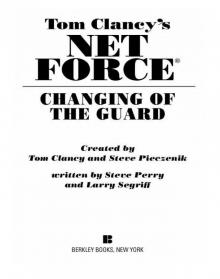 Changing of the Guard
Changing of the Guard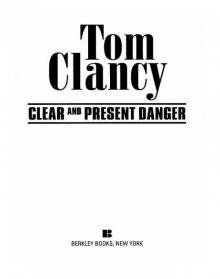 Clear and Present Danger
Clear and Present Danger Hounds of Rome
Hounds of Rome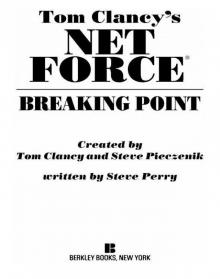 Breaking Point
Breaking Point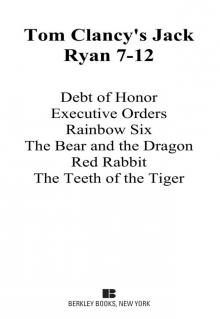 Tom Clancy's Jack Ryan Books 7-12
Tom Clancy's Jack Ryan Books 7-12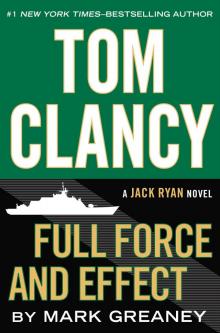 Full Force and Effect
Full Force and Effect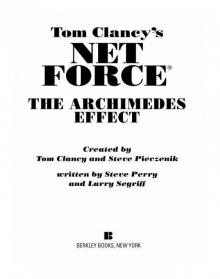 The Archimedes Effect
The Archimedes Effect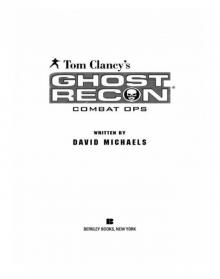 Combat Ops
Combat Ops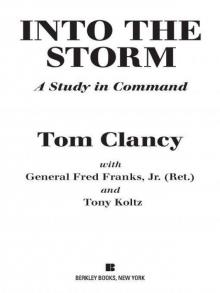 Into the Storm: On the Ground in Iraq
Into the Storm: On the Ground in Iraq Under Fire
Under Fire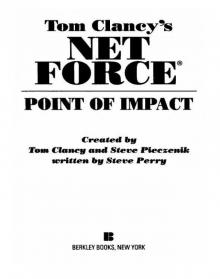 Point of Impact
Point of Impact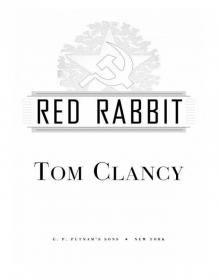 Red Rabbit
Red Rabbit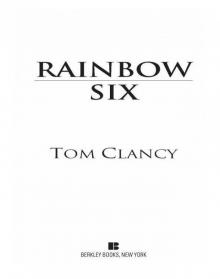 Rainbow Six
Rainbow Six The Hunt for Red October
The Hunt for Red October The Teeth of the Tiger
The Teeth of the Tiger Conviction (2009)
Conviction (2009)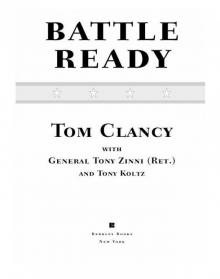 Battle Ready
Battle Ready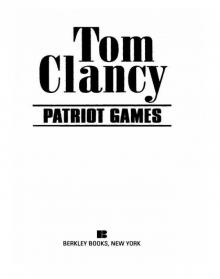 Patriot Games
Patriot Games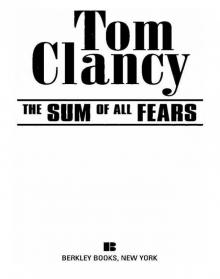 The Sum of All Fears
The Sum of All Fears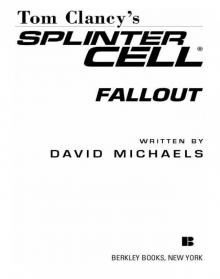 Fallout (2007)
Fallout (2007) Red Storm Rising
Red Storm Rising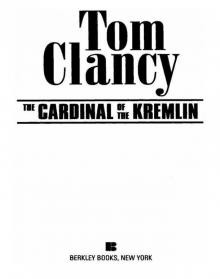 The Cardinal of the Kremlin
The Cardinal of the Kremlin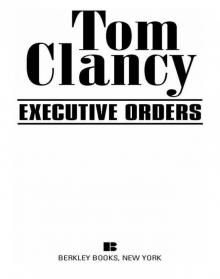 Executive Orders
Executive Orders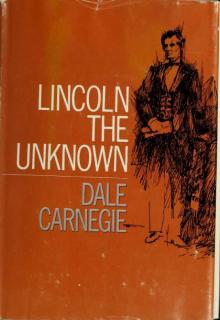 Lincoln, the unknown
Lincoln, the unknown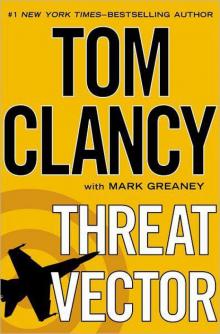 Threat Vector
Threat Vector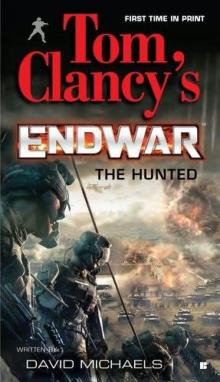 The Hunted
The Hunted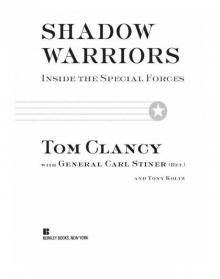 Shadow Warriors: Inside the Special Forces
Shadow Warriors: Inside the Special Forces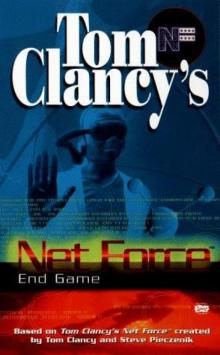 End Game
End Game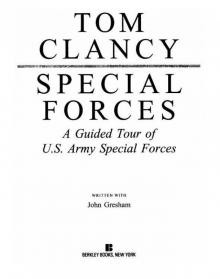 Special Forces: A Guided Tour of U.S. Army Special Forces
Special Forces: A Guided Tour of U.S. Army Special Forces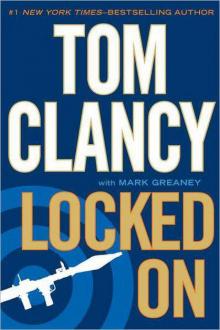 Locked On
Locked On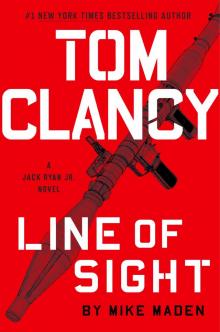 Line of Sight
Line of Sight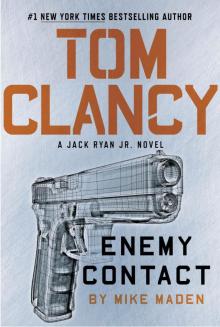 Tom Clancy Enemy Contact - Mike Maden
Tom Clancy Enemy Contact - Mike Maden Fighter Wing: A Guided Tour of an Air Force Combat Wing
Fighter Wing: A Guided Tour of an Air Force Combat Wing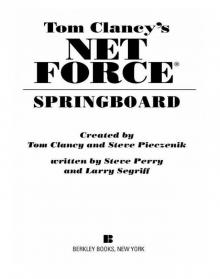 Springboard
Springboard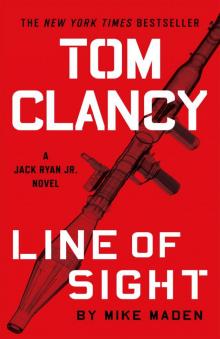 Line of Sight - Mike Maden
Line of Sight - Mike Maden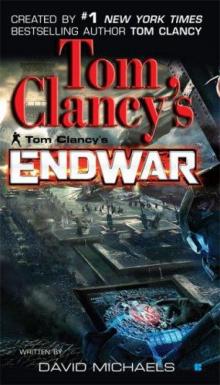 EndWar
EndWar Dead or Alive
Dead or Alive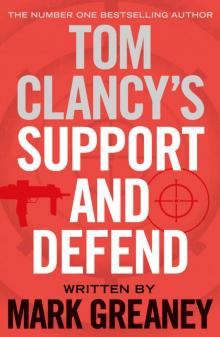 Tom Clancy Support and Defend
Tom Clancy Support and Defend Checkmate
Checkmate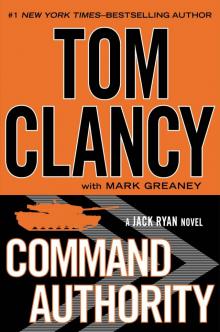 Command Authority
Command Authority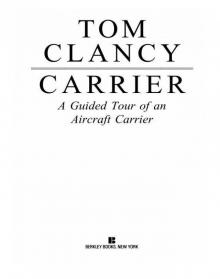 Carrier: A Guided Tour of an Aircraft Carrier
Carrier: A Guided Tour of an Aircraft Carrier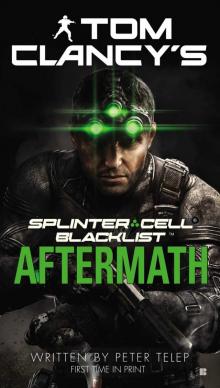 Blacklist Aftermath
Blacklist Aftermath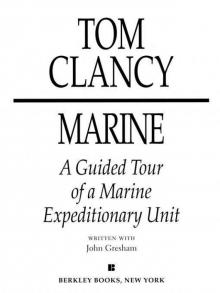 Marine: A Guided Tour of a Marine Expeditionary Unit
Marine: A Guided Tour of a Marine Expeditionary Unit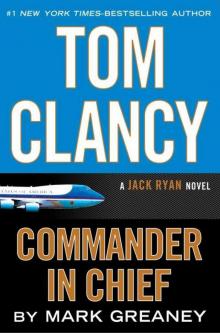 Commander-In-Chief
Commander-In-Chief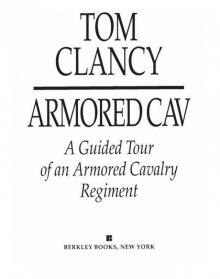 Armored Cav: A Guided Tour of an Armored Cavalry Regiment
Armored Cav: A Guided Tour of an Armored Cavalry Regiment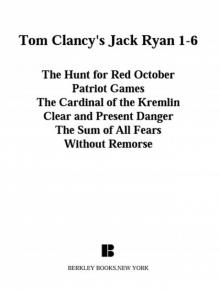 Tom Clancy's Jack Ryan Books 1-6
Tom Clancy's Jack Ryan Books 1-6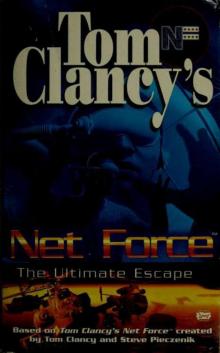 The Ultimate Escape
The Ultimate Escape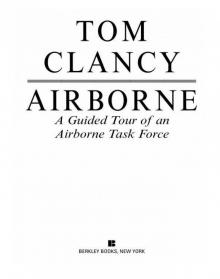 Airborne: A Guided Tour of an Airborne Task Force
Airborne: A Guided Tour of an Airborne Task Force Debt of Honor
Debt of Honor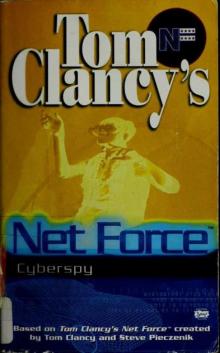 Cyberspy
Cyberspy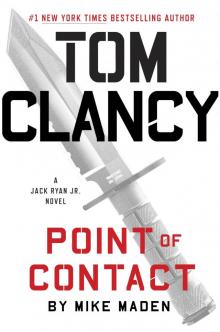 Point of Contact
Point of Contact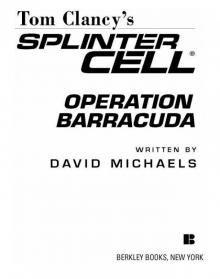 Operation Barracuda (2005)
Operation Barracuda (2005)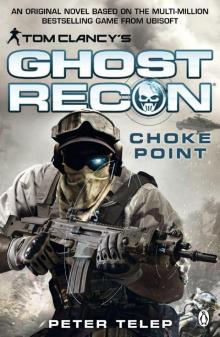 Choke Point
Choke Point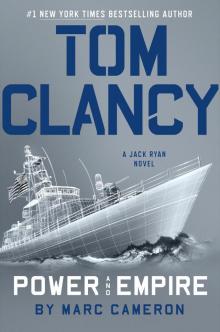 Power and Empire
Power and Empire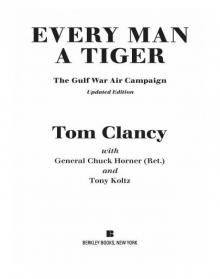 Every Man a Tiger: The Gulf War Air Campaign
Every Man a Tiger: The Gulf War Air Campaign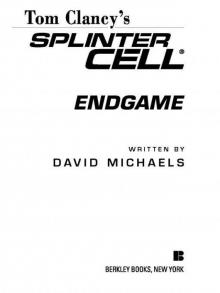 Endgame (1998)
Endgame (1998)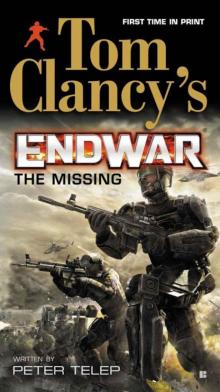 EndWar: The Missing
EndWar: The Missing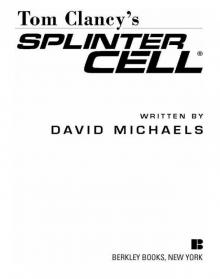 Splinter Cell (2004)
Splinter Cell (2004)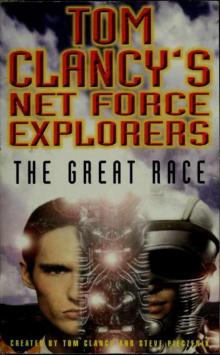 The Great Race
The Great Race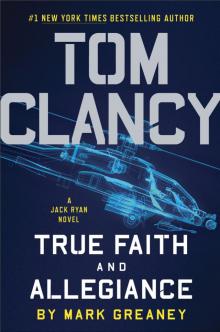 True Faith and Allegiance
True Faith and Allegiance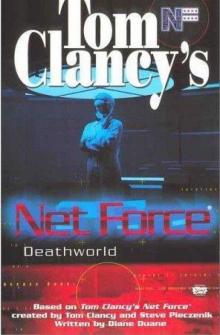 Deathworld
Deathworld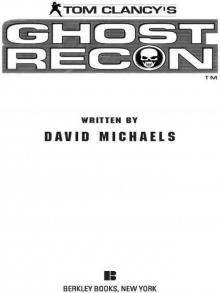 Ghost Recon (2008)
Ghost Recon (2008)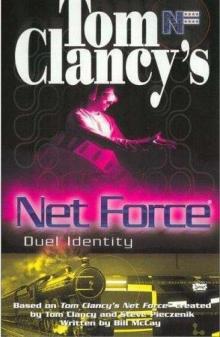 Duel Identity
Duel Identity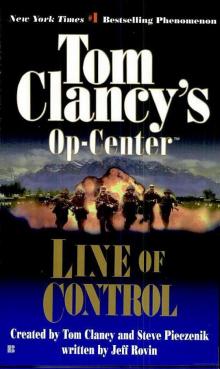 Line of Control o-8
Line of Control o-8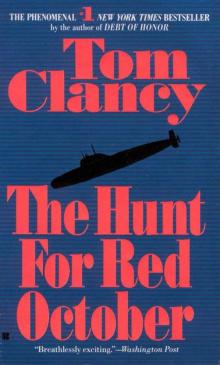 The Hunt for Red October jr-3
The Hunt for Red October jr-3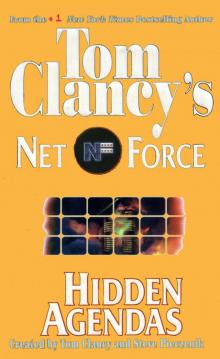 Hidden Agendas nf-2
Hidden Agendas nf-2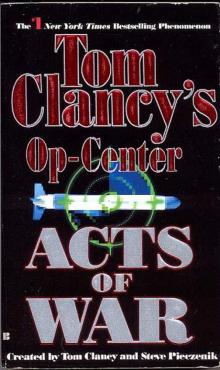 Acts of War oc-4
Acts of War oc-4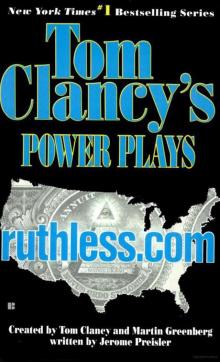 Ruthless.Com pp-2
Ruthless.Com pp-2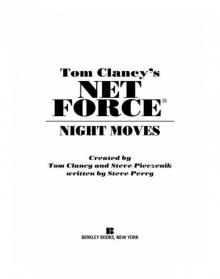 Night Moves
Night Moves The Hounds of Rome - Mystery of a Fugitive Priest
The Hounds of Rome - Mystery of a Fugitive Priest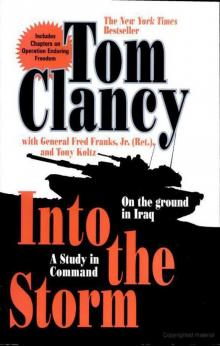 Into the Storm: On the Ground in Iraq sic-1
Into the Storm: On the Ground in Iraq sic-1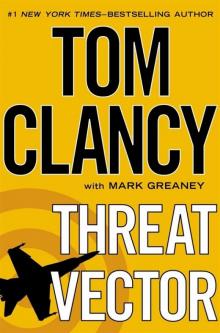 Threat Vector jrj-4
Threat Vector jrj-4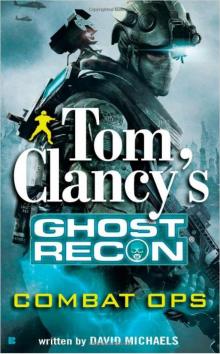 Combat Ops gr-2
Combat Ops gr-2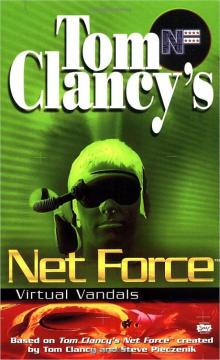 Virtual Vandals nfe-1
Virtual Vandals nfe-1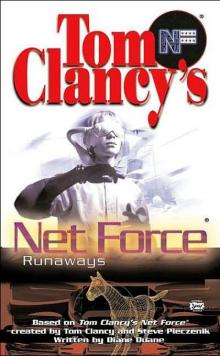 Runaways nfe-16
Runaways nfe-16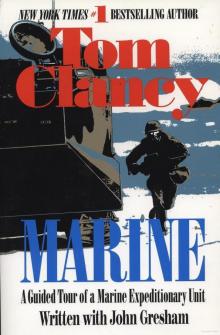 Marine: A Guided Tour of a Marine Expeditionary Unit tcml-4
Marine: A Guided Tour of a Marine Expeditionary Unit tcml-4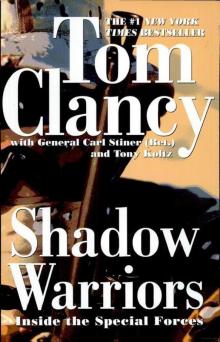 Shadow Warriors: Inside the Special Forces sic-3
Shadow Warriors: Inside the Special Forces sic-3 Jack Ryan Books 1-6
Jack Ryan Books 1-6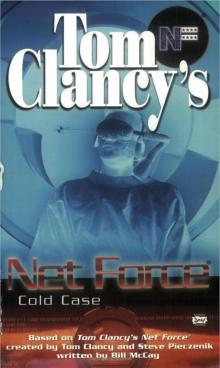 Cold Case nfe-15
Cold Case nfe-15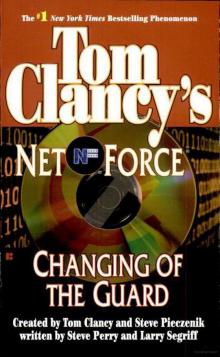 Changing of the Guard nf-8
Changing of the Guard nf-8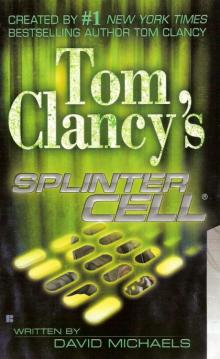 Splinter Cell sc-1
Splinter Cell sc-1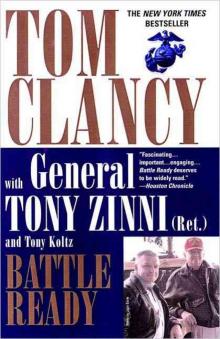 Battle Ready sic-4
Battle Ready sic-4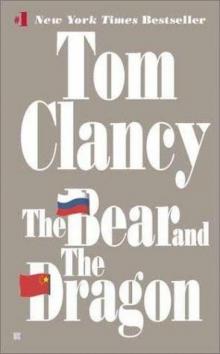 The Bear and the Dragon jrao-11
The Bear and the Dragon jrao-11 Fighter Wing: A Guided Tour of an Air Force Combat Wing tcml-3
Fighter Wing: A Guided Tour of an Air Force Combat Wing tcml-3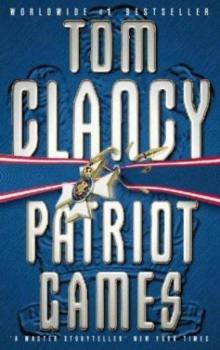 Patriot Games jr-1
Patriot Games jr-1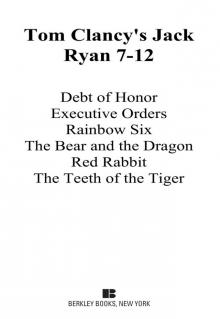 Jack Ryan Books 7-12
Jack Ryan Books 7-12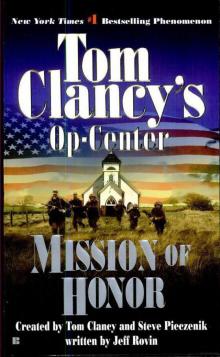 Mission of Honor o-9
Mission of Honor o-9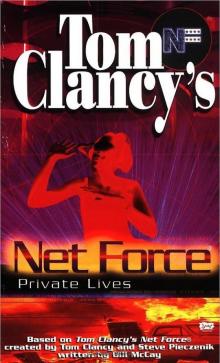 Private Lives nfe-9
Private Lives nfe-9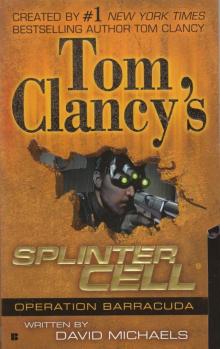 Operation Barracuda sc-2
Operation Barracuda sc-2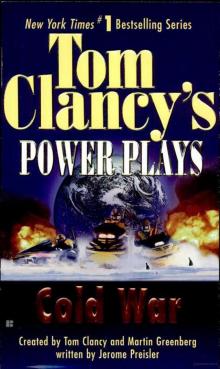 Cold War pp-5
Cold War pp-5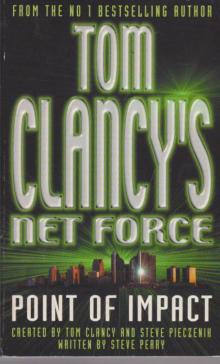 Point of Impact nf-5
Point of Impact nf-5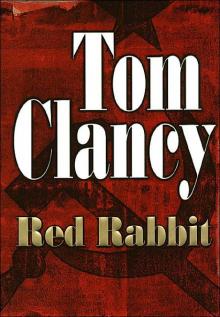 Red Rabbit jr-9
Red Rabbit jr-9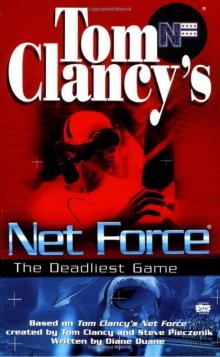 The Deadliest Game nfe-2
The Deadliest Game nfe-2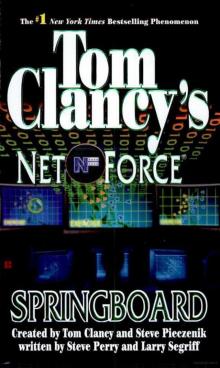 Springboard nf-9
Springboard nf-9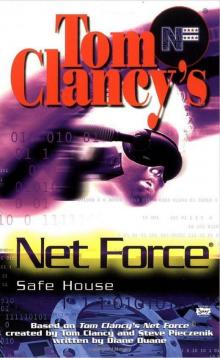 Safe House nfe-10
Safe House nfe-10 EndWar e-1
EndWar e-1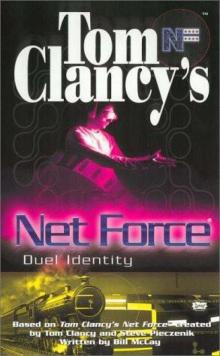 Duel Identity nfe-12
Duel Identity nfe-12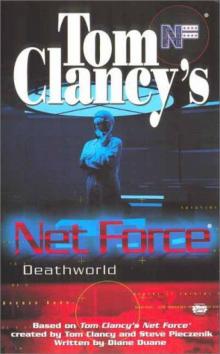 Deathworld nfe-13
Deathworld nfe-13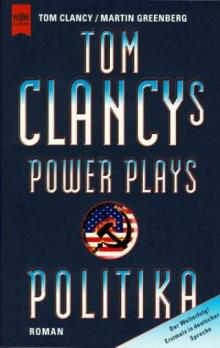 Politika pp-1
Politika pp-1 Rainbow Six jr-9
Rainbow Six jr-9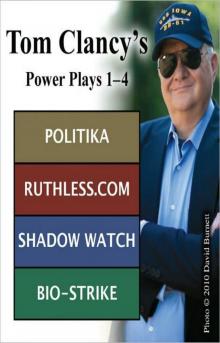 Tom Clancy's Power Plays 1 - 4
Tom Clancy's Power Plays 1 - 4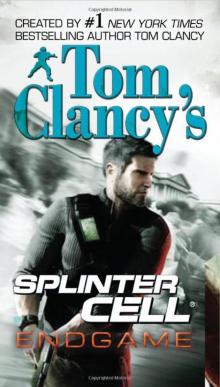 Endgame sc-6
Endgame sc-6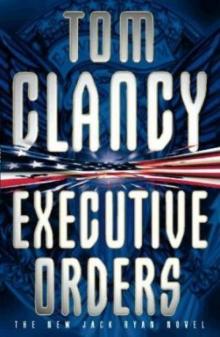 Executive Orders jr-7
Executive Orders jr-7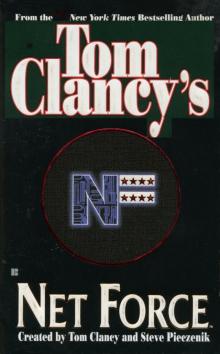 Net Force nf-1
Net Force nf-1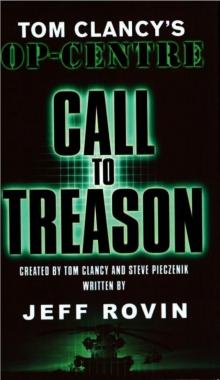 Call to Treason o-11
Call to Treason o-11 Locked On jrj-3
Locked On jrj-3 Against All Enemies
Against All Enemies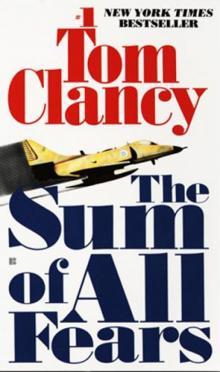 The Sum of All Fears jr-7
The Sum of All Fears jr-7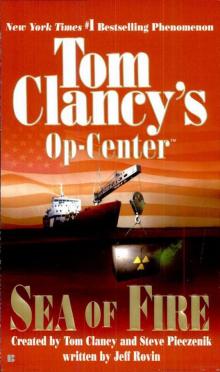 Sea of Fire o-10
Sea of Fire o-10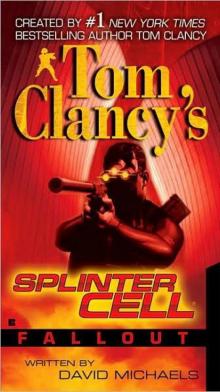 Fallout sc-4
Fallout sc-4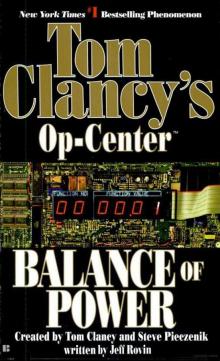 Balance of Power o-5
Balance of Power o-5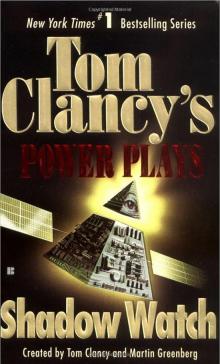 Shadow Watch pp-3
Shadow Watch pp-3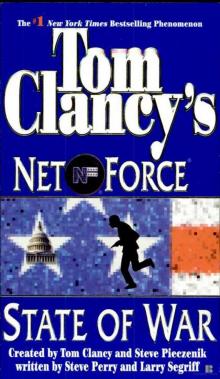 State of War nf-7
State of War nf-7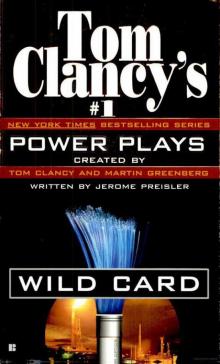 Wild Card pp-8
Wild Card pp-8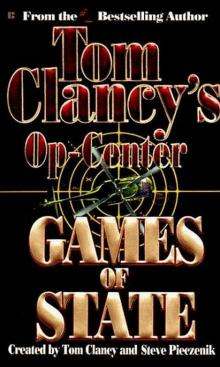 Games of State o-3
Games of State o-3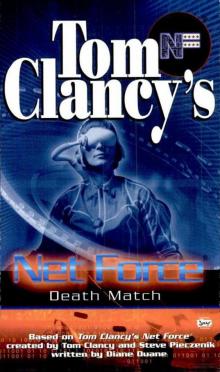 Death Match nfe-18
Death Match nfe-18 Against All Enemies mm-1
Against All Enemies mm-1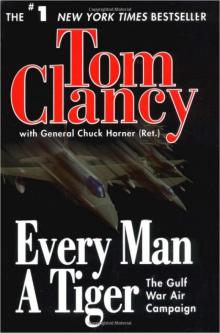 Every Man a Tiger: The Gulf War Air Campaign sic-2
Every Man a Tiger: The Gulf War Air Campaign sic-2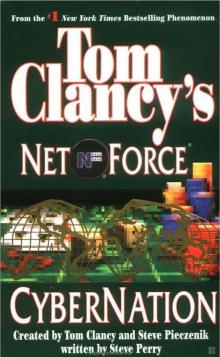 Cybernation nf-6
Cybernation nf-6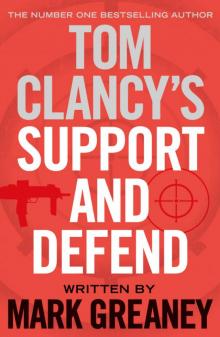 Support and Defend
Support and Defend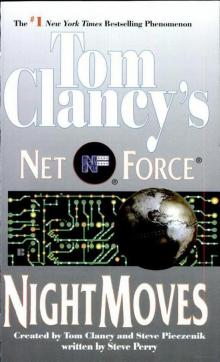 Night Moves nf-3
Night Moves nf-3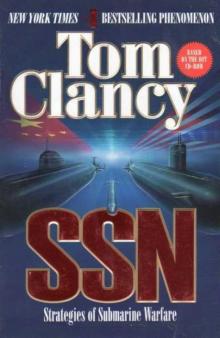 SSN
SSN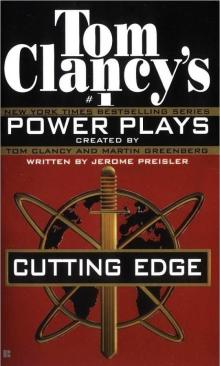 Cutting Edge pp-6
Cutting Edge pp-6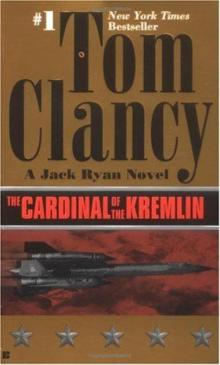 The Cardinal of the Kremlin jrao-5
The Cardinal of the Kremlin jrao-5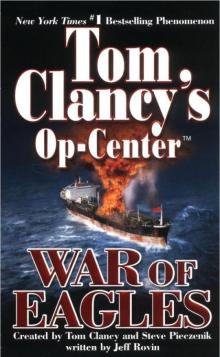 War of Eagles o-12
War of Eagles o-12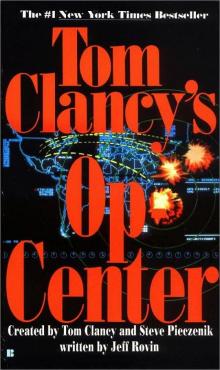 Op-Center o-1
Op-Center o-1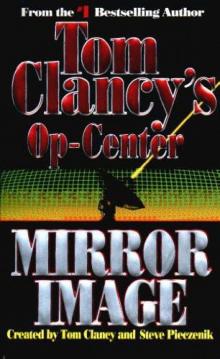 Mirror Image o-2
Mirror Image o-2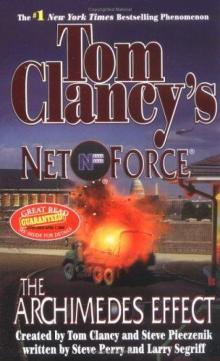 The Archimedes Effect nf-10
The Archimedes Effect nf-10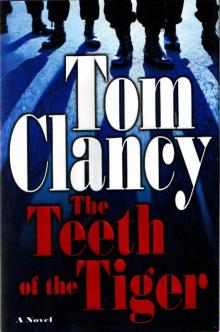 Teeth of the Tiger jrj-1
Teeth of the Tiger jrj-1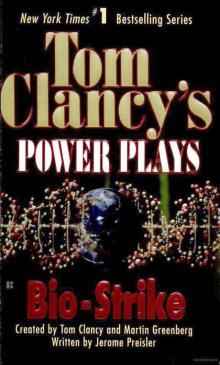 Bio-Strike pp-4
Bio-Strike pp-4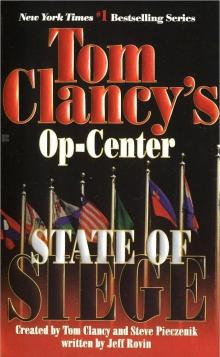 State of Siege o-6
State of Siege o-6 Debt of Honor jr-6
Debt of Honor jr-6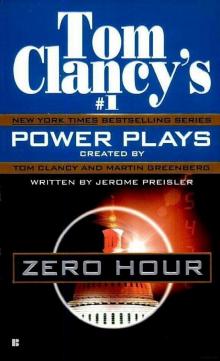 Zero Hour pp-7
Zero Hour pp-7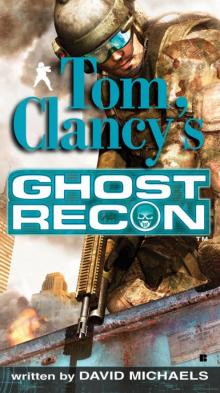 Ghost Recon gr-1
Ghost Recon gr-1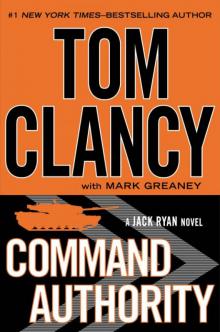 Command Authority jr-10
Command Authority jr-10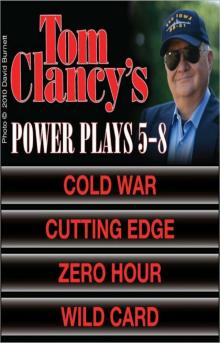 Tom Clancy's Power Plays 5 - 8
Tom Clancy's Power Plays 5 - 8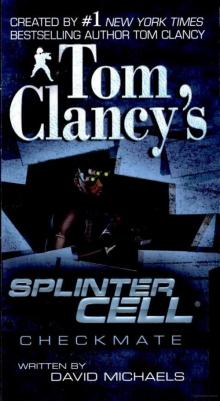 Checkmate sc-3
Checkmate sc-3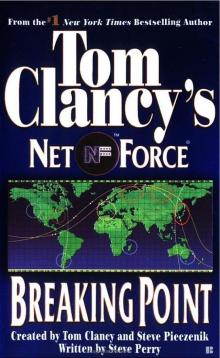 Breaking Point nf-4
Breaking Point nf-4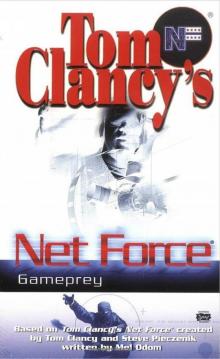 Gameprey nfe-11
Gameprey nfe-11 The Hunted e-2
The Hunted e-2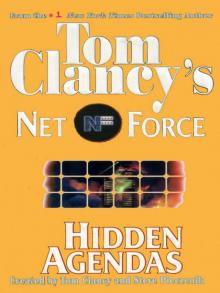 Hidden Agendas
Hidden Agendas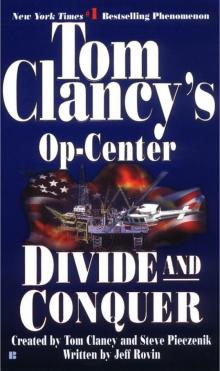 Divide and Conquer o-7
Divide and Conquer o-7